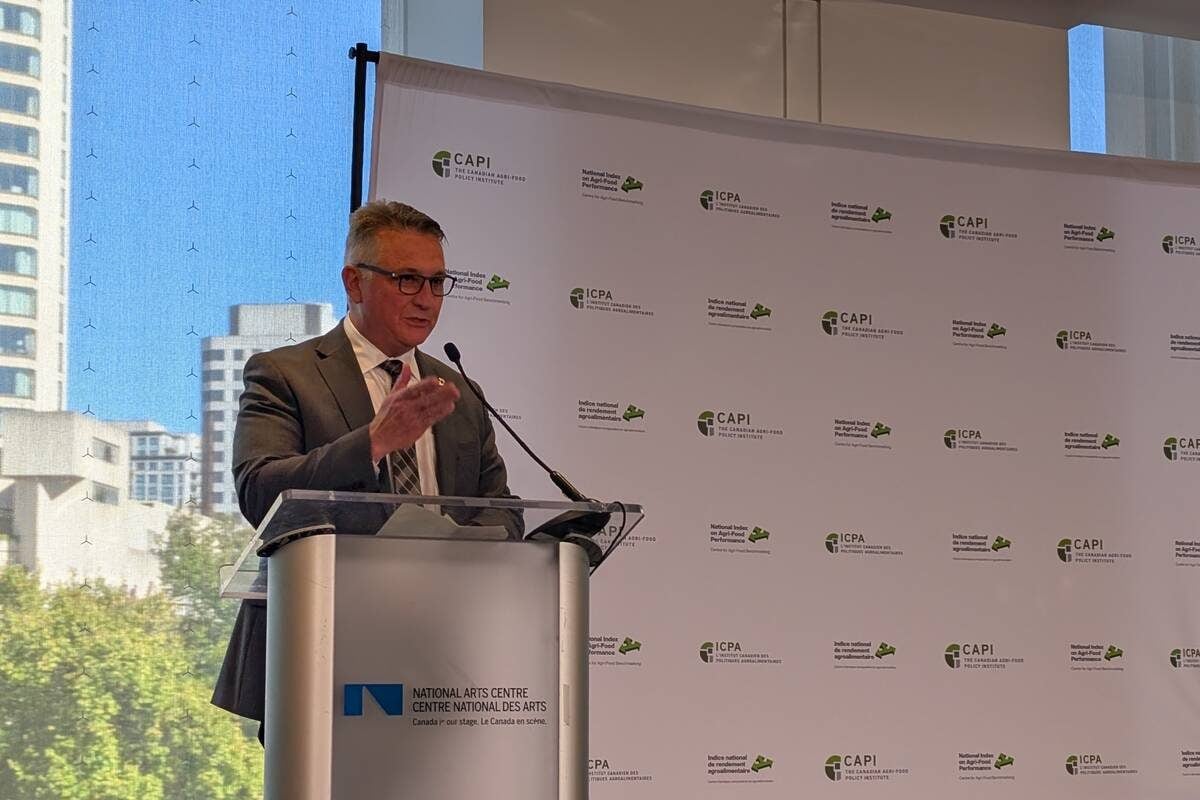A new federal climate plan which further cranks up taxes on carbon emissions also includes pledges of new programs to help sink more carbon into farmland.
The government on Friday released the sequel to its 2016 Pan-Canadian Framework on Clean Growth and Climate Change — a “strengthened” climate plan, titled A Healthy Environment and a Healthy Economy, that lays out another eight years’ worth of increases in regulatory charges on fossil fuel purchases.
Where the previous plan set a price on carbon at $20 per tonne starting in 2019, rising $10 per year to $50 in 2022, Friday’s plan sets “longer-term certainty on the price of pollution,” further raising the carbon price by $15 per year starting in 2023, up to $170 per tonne in 2030.
Read Also

Federal agriculture minister to meet with Chinese officials, business leaders
Federal Agriculture Minister Heath MacDonald is in China this week in hopes of strengthening agricultural ties between the countries.
Several Canadian farm groups, which have already pressed for carbon tax exemptions for fuels such as propane used for drying grain, have panned the new proposed hikes.
“Farmers cannot just simply raise the price of our grain to help cover these increased costs. We do not set those prices. It’s incredibly frustrating to see this shortsightedness continue,” Grain Farmers of Ontario chair Markus Haerle said in a release Friday.
“This is another example of our government implementing a program without truly understanding the detrimental impacts it will have in the larger picture of the Canadian economy, food system and rural communities.”
GFO estimated that in 2022 the carbon tax will cost Canadian farmers around $60 million a year on natural gas and propane to dry crops, and “the recent announcement could triple that cost.”
Stephen Vandervalk, Alberta vice-president for the Western Canadian Wheat Growers, said Ottawa “refuses to acknowledge that grain farmers are actually net zero emitters (who) have been using sustainable farming technology for decades yet have been given no recognition for our carbon sequestering.”
The government noted its existing carbon tax exemptions for gas and diesel used on farms and in greenhouse operations, but no specific new exemption for propane-fired dryers was mentioned.
It said it “recognizes that particular groups or sectors may require targeted support or relief, in particular because of the small number of alternative options they may have in the face of carbon pricing.”
The government on Friday also granted that farmers, ranchers and agrifood firms are “constantly innovating to improve their practices so that they are more sustainable, making greater use of inputs, developing bio-based products and increasing their energy efficiency.”
In 2018, it said, Canadian agriculture generated 50 per cent fewer greenhouse gas emissions for every dollar of gross domestic product it generated compared to 1997. It also noted reduced emissions per kilogram in the beef, dairy, pork and poultry sectors.
Also, it said, “while climate change may present an opportunity for Canadian agriculture in the form of longer growing seasons and an expanded ability to grow different crops, it poses significant threats related to increased pests and unpredictable weather events that make it hard for farmers to ensure that they are successful year-over-year.”
Without the measures taken in the new plan, the government projected the agriculture sector’s annual emissions would reach 77 million tonnes in 2030, up from 72 million in 2005. With the measures announced in Friday’s plan, the sector’s emissions in 2030 are expected to come in three million tonnes lower, at 74 million.
“This is a plan that will help achieve both Canadians’ environmental goals and our economic hopes: clean air, clean water and long-term secure jobs,” federal Environment Minister Jonathan Wilkinson said in a release Friday.
“It means we will exceed Canada’s 2030 climate target while positioning Canadians to thrive in an increasingly low-carbon economy.”
Federal Green Party leader Annamie Paul on Friday hailed several of the commitments the Liberal government laid out in its plan as “elements we all embrace.”
However, she warned the plan includes no carbon budget that would provide a “clear accountability structure, with achievable short and long-term targets,” nor does it include any structure that would hold future administrations to the same rules.
New programs
Technology: The plan as laid out Friday calls for investment of $165.7 million over seven years to support the ag industry in developing “transformative clean technologies” and to help farmers adopt “commercially available clean technology.”
Sequestration: It also calls for up to $631 million over 10 years to work with provinces, territories, conservation organizations, Indigenous communities, private landowners and others to “restore and enhance wetlands, peatlands, grasslands and agricultural lands” in ways that boost carbon sequestration.
The funds in question were previously announced in the government’s Fall Economic Statement on Nov. 30.
Strategy: Another $98.4 million will be spent over 10 years to establish a new Natural Climate Solutions for Agriculture Fund, which the government said will leverage $85 million in existing programming.
The new fund, the government said, is to be guided by a new Canadian Agri-Environmental Strategy, “to support the sector’s actions on climate change and other environmental priorities towards 2030 and 2050.”
“Canada’s farms have significant potential to increase carbon sequestration and realize other environmental benefits through the adoption of beneficial management practices,” the government said in the Fall Economic Statement, where the fund was also first announced.
Fertilizers: The government’s new plan also calls for a national emission reduction target of 30 per cent below 2020 levels from fertilizers — and to work with fertilizer makers, farmers, provinces and territories on an approach to meet that target.
Direct emissions from synthetic nitrogen fertilizer application have risen by about 60 per cent since 2005, and those emissions are projected to keep increasing, the government said.
“Improving how fertilizers are used through better products and practices will save farmers money and time, and help protect Canada’s land and water,” the government said.
Trees: The new plan also pledges $3.16 billion over 10 years to partner with provinces, territories, non-government organizations, Indigenous communities, municipalities, private landowners and others to plant two billion trees — including on farms, on private rural and Crown lands and on both public and private land in communities.
The tree-planting funds were also announced in the Fall Economic Statement.
Fuels: Indirectly, the government said the new plan will also help farmers diversify by producing feedstocks for biofuels, through a new Low-carbon and Zero-emissions Fuels Fund.
That fund is expected to see $1.5 billion put toward both production and use of low-carbon fuels — including renewable natural gas and diesel as well as cellulosic ethanol — “in a manner that complements federal carbon pollution pricing, regulatory efforts and other federal programming.”
Under its Clean Fuel Standard, the government said it will increase the use of biofuels in Canada and demand for biofuel feedstock — regardless of the feedstocks’ point of origin.
But to be eligible for compliance credits, biofuels used in Canada will have to be made from biomass feedstocks that “adhere to land use and biodiversity criteria” so as not to create a “loss of biodiversity from growing and harvesting biofuel feedstock.”
For example, feedstock that poses a “high risk of indirect land use change” would be ineligible, such as when feedstock is planted on crop land displacing food crops and forest land is then converted to grow the displaced food crops.
So far, the government said, palm oil is the only such feedstock that would be ineligible for compliance credits. — Glacier FarmMedia Network













